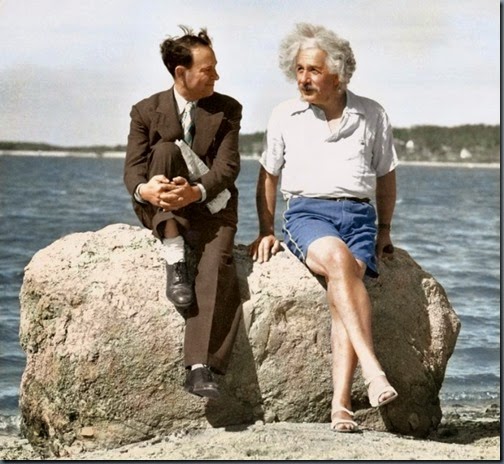| Despite obvious advantages, the era of autonomous vehicles may not be all plain sailing (Photo: Shutterstock) It may seem as if the only arguments against self-driving cars come from two kinds of people – those fearful of any scenario where they might have to forgo control behind the wheel and those who distrust all technology out of hand. Lolling about while a computer gets you through traffic has its attractions for many of us and there has been little discussion about the potential downsides of a driverless future, but a new study has pointed out some potential flaws in this looming auto utopia. The upsides seem pretty self-evident. The first advantage of driverless cars is one of multitasking. While being taken from here to there in a driverless car, you can do anything you want. Eat, sleep, work, chat with relatives – commute time is no longer down time. Then there's safety. Although this has yet to be born out, the theory goes that people, on the whole, are not the best drivers out there. We might all think we're Mario Andretti behind the wheel, but sadly and all too obviously, we are not. By leaving the driving to a whole slew of computers, sensors, servos and software, getting from home to office should be rendered accident free. The other potential plus is efficiently. While a driverless car is using its digital prowess to whisk you to the store, it can, and will, be talking to all the other driverless cars out there. And not only chatting with them, but talking back and forth with smart roadways. This will allow all sorts of efficiencies to be realized. One driverless car will know that the other driverless cars in front of them will not suddenly slow down, so the gaps between can be shortened. And the first driverless car in this line, when it realizes that it will have to slow down, or stop, will relay this information to all the other driverless cars in the line, and they can react as a unit. Intelligent roadways will allow the timing of traffic lights to be optimized to the known level of traffic density and speed. Swoosh, off you go! From home to office to store and back home again with nary a red light to be seen along the way! Scott Le Vine, Alireza Zolfagharib, and John Polak have a different take. The researchers from the Department of Geography at SUNY in New Paltz, New York and at the Centre for Transport Studies, Department of Civil and Environmental Engineering, Imperial College London, have recently published a study that, while not slamming on the brakes for self-driving cars, does point out that it might not all be a smooth road ahead. "Autonomous cars are expected to increase road network capacity and reduce the disutility of travel time," but " ... under certain circumstances these benefits may be in conflict." The study examined how two of the three stated benefits – more comfort and less traffic – can live together by running a computer simulation of how driverless cars would work in practice, and comparing that to trains. Commuter trains are used in many the same ways as driverless cars; you get in, sit down, and read a book or do some work on your commute. Trains work very well for this because trains are smooth. Once they are up and running, they are relatively much more comfortable environment over the stretch of a commute than cars, even driverless ones, could potentially be. It is that potential problem that the study points to. If driverless cars do a lot of stop/start work like normal cars, even at a reduced velocity, they will become a less workable environment. But, if they speed up and slow down more smoothly for the passenger's sake, essentially mimicking the acceleration and deceleration of trains, then self driving cars would forfeit much of their capacity to alleviate congestion in the process. "Acceleration has big impacts on congestion at intersections because it describes how quickly a vehicle begins to move," says lead researcher Scott Le Vine. "Think about being stuck behind an 18-wheeler when the light turns green. It accelerates very slowly, which means that you're delayed much more than if you were behind a car that accelerated quickly." The team replicated traffic at a run of the mill four-way urban intersection where 25 percent of the vehicles were driverless. In some simulations, the driverless cars traveled the way that light rail trains do, gently on the gas then gently on the brakes. In other words more comfortable than a normal car, but still herky-jerky at times. In other scenarios, the driverless rides started and stopped like a high-speed rail train: smoothness in all things. Le Vine and colleagues tinkered with a number of parameters such as longer yellow lights or following distances. They modeled 16 scenarios against a control group with all human-driven cars, running each simulation for an hour and repeating it 100 times. They considered the normal influence each situation had on traffic with regards to delays and road capacity. The bottom line was this: In every single test, self driving cars where calculated to create a comfortable, rail-like ride made congestion worse than it would have been in a baseline scenario with people behind every wheel. When driverless cars accelerated and decelerated in the style of light rail, the congestion deteriorated from 4 percent to 50 percent and the number of cars traveling through the intersection also fell between 4 percent and 21 percent. Going for high speed rail style of smoothness, those numbers got even worse: Delays increased from 36 percent to nearly 2,000 percent and intersection capacity fell between 18 percent and 53 percent. "Our findings suggest a tension in the short run between these two anticipated benefits (more productive use of travel time and increased network capacity), at least in certain circumstances," say the researchers. "It was found that the trade-off between capacity and passenger-comfort is greater if autonomous car occupants program their vehicles to keep within the constraints of HSR (in comparison to LRT)." It is also worth pointing out that these simulations just involved normal cars and driverless cars. There were no trucks, buses or, that even more chaotic element, pedestrians. As a single simulation-based study, the research may not add up to a crippling blow for driverless car advocates, but it shows that there's work to be done in order find a liveable recipe for the coming mix of autonomous and conventional vehicles on our roads. Source: Autonomous cars: The tension between occupant experience and intersection capacity (Science Direct) via The Atlantic.
|
























